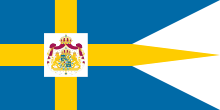Waldemarsudde


Prins Eugens Waldemarsudde (Swedish: "Cape of Waldemar"), is a museum located on Djurgården in central Stockholm. The name is composed of Waldemar, an Old German noble male name, and udde, meaning cape. It is derived from a historical name of the island Djurgården, Valmundsö (see History of Djurgården.)
It was the former home of the Swedish Prince Eugen, who discovered the place in 1892, when he rented a house there for a few days. Seven years later he bought the premises and had a new house designed by the architect Ferdinand Boberg, who also designed Rosenbad (the Prime Minister's Office and the Government Chancellery), and erected 1903–1904.
Prince Eugen had been educated as a painter in Paris and after his death the house was converted to a museum of his own and others paintings. The prince died in 1947 and is buried by the beach close to the house.
The complex consists of a castle-like main building—the Mansion—completed in 1905, and the Gallery Building, added in 1913. The estate also includes the original manor-house building, known as the Old House and an old linseed mill, both dating back to the 1780s. The estate is set in parkland which features centuries-old oak trees and reflects the prince's interest for gardening and flower arrangement. The Art Nouveau interior, including the tiled stoves, by Boberg are designed in a Gustavian style and makes good use of both the panoramic view of the inlet to Stockholm and the light resulting from the elevated location of the building.
See also
References
- Bengt O H Johansson (1999). "Ytterstaden". Guide till Stockholms arkitektur (in Swedish) (2nd ed.). Stockholm: Arkitektur Förlag AB. p. 175. ISBN 91-86050-41-9.
External links
![]() Media related to Waldemarsudde at Wikimedia Commons
Media related to Waldemarsudde at Wikimedia Commons
- Prince Eugen's Waldemarsudde (official website)
- Prins Eugens Waldemarsudde, swedishgardens.se
Coordinates: 59°19′12″N 18°06′47″E / 59.32000°N 18.11306°E
